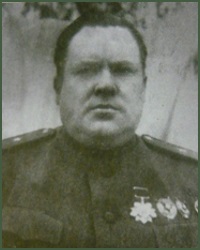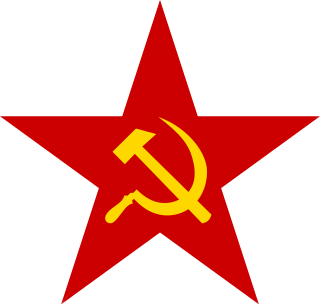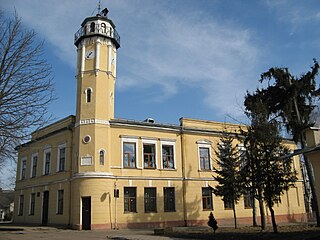The 316th Rifle Division was formed as a Red Army division during World War II. The division was initially formed in July 1941, renamed the 8th Guards Rifle Division on 18 November 1941. The division was recreated at Vjasniki in July 1942, fought in the early battles around Stalingrad and was disbanded in November 1942. The division was recreated for the third time from the 57th and 131st Rifle Brigades in September 1943. The division ended the war assigned to the 27th Army of the 3rd Ukrainian Front.
The 266th Rifle Division was a rifle division of the Soviet Red Army during World War II. The 266th was formed three times during the war.
The 31st Rifle Division was an infantry division of the Soviet Union's Red Army during the interwar period and World War II.

The 138th Rifle Division began service as a standard Red Army rifle division, was converted to serve for two years as a mountain rifle division, then back to a rifle division. The division played a leading role in defending the Barricades ordnance factory in the Battle of Stalingrad, for which it was raised to Guards status as the 70th Guards Rifle Division. A new 138th was raised a few months later and fought through Ukraine and the Carpathian Mountains of Czechoslovakia from August 1943 to May 1945.

The 279th Rifle Division was an infantry division of the Soviet Union's Red Army during World War II, formed twice.
The 4th Guards Rifle Division was formed on September 18, 1941, from the 161st Rifle Division as one of the original Guards formations of the Red Army, in recognition of that division's participation in the successful counter-offensive that drove German forces out of their positions at Yelnya. The division then moved northwards to serve in the defense of Leningrad, as well as the early attempts to break that city's siege, but later was sent to the deep southern part of the front, where it continued to serve for the duration, ending the war at Vienna. The division was disbanded in 1946.

The 310th Rifle Division was a standard Red Army rifle division formed on July 15, 1941 in Kazakhstan before being sent to the vicinity of Leningrad, where it spent most of the war, sharing a similar combat path with its "sister", the 311th Rifle Division. The soldiers of the division fought until early 1944 to, first, hold open some sort of lifeline to the besieged city, then to break the siege and drive off the besieging German forces. They then participated in the offensive that drove Germany's Finnish allies out of the war. Finally, the division was redeployed to take the fight to the German heartland in the winter and spring of 1945. It ended the war north of Berlin with a very creditable combat record for any rifle division.

The 312th Rifle Division was a Red Army infantry division formed for the first time on July 10, 1941 in Kazakhstan before being sent to the vicinity of Leningrad, where it fought briefly before being redeployed to the front southwest of Moscow in late October, where it suffered huge losses in the wake of Operation Typhoon, and was disbanded not long after. A new 312th began forming in December in Siberia, and this second formation served again in front of Moscow, in the fighting in the area of Rzhev and Sychevka during 1942 and into 1943. In the latter year, the division distinguished itself in the liberation of Smolensk and received that city's name as an honorific. As the war concluded, the men and women of the 312th gained additional honors, and ended the war fighting near Berlin. The division was disbanded shortly after the end of the conflict.

The 314th Rifle Division was a standard Red Army rifle division formed on July 15, 1941 at Petropavlovsk in northern Kazakhstan, before being sent to the vicinity of Leningrad, in the 7th Separate Army east of Lake Ladoga, facing the Finnish Army in East Karelia for more than a year. In consequence the division saw relatively uneventful service on this mostly quiet front until the autumn of 1942, when it was moved south to face German Army Group North, and took a leading role in Operation Iskra, which finally drove a land corridor through to besieged Leningrad in January 1943; a year later it also served prominently in the offensive that broke the enemy siege for good. During the summer the division played a role in the offensive that drove Finland out of the war. Following this, the 314th spent a few months fighting in the Baltic States, before being reassigned southwards to 1st Ukrainian Front to take the fight into Poland and then into the German heartland in the winter and spring of 1945. It ended the war in Czechoslovakia with a distinguished record of service.

The 315th Rifle Division was a standard Red Army rifle division formed for the first time on February 12, 1942 in the Siberian Military District before being sent to the vicinity of Stalingrad, where it was engaged in the futile efforts to break through to the besieged city from the north near Kotluban. After rebuilding, it was part of the southern thrust of Operation Uranus in November, helping to encircle the German 6th Army and also to hold off its would-be rescuers. During 1943 and early 1944 the division advanced through the southern Donbass and into Ukraine, where it was honored for its role in the liberation of Melitopol, before taking part in the liberation of the Crimea in April and May, 1944. The men and women of the 315th ended their war on an anti-climactic note, serving for the last year as part of the garrison of the Crimea. However, the unit, and its successors, continued to serve well into the postwar era.
The 285th Rifle Division was an infantry division of the Soviet Union's Red Army during World War II. Formed in the summer of 1941, the division entered combat during the fall of that year, fighting in operations attempting to break the Siege of Leningrad. The division fought in the same area until the relief of Leningrad in February 1944, when it began advancing into the Baltic states. The division served in the Baltic states until October, when it transferred south to Poland, where it fought in the Vistula–Oder Offensive and Silesian Offensives in early 1945. The division was disbanded soon after the end of the war in the summer of 1945.
The 288th Rifle Division was an infantry division of the Soviet Union's Red Army during World War II. Formed in the summer of 1941, the division was sent into combat on the Volkhov Front in the fall of that year. The division served in the area until early 1944 when the Siege of Leningrad was ended and the 288th advanced into the Baltic states. The division spent the final months of the war blockading trapped German troops in the Courland Pocket before being disbanded in early 1946.
The 282nd Rifle Division was an infantry division of the Soviet Union's Red Army during World War II, formed twice.
The 281rd Rifle Division was an infantry division of the Soviet Union's Red Army during World War II. Formed in the summer of 1941, the division fought in the Siege of Leningrad until the end of the siege in early 1944, when it advanced into eastern Estonia. The 281st was soon moved north to fight against Finland during the summer of that year, and after Finland's withdrawal from the war fought in battles in East Prussia and Poland during early 1945. The division was disbanded in the summer of 1945.
The 280th Rifle Division was an infantry division of the Soviet Union's Red Army during World War II, formed twice. It was first formed in the summer of 1941 and destroyed in the Bryansk pocket in the fall of 1941. The division was reformed in late December, and served throughout the war before being disbanded in 1946.
The 291st Rifle Division was an infantry division of the Soviet Union's Red Army during World War II. Formed in the summer of 1941, the 290th fought in the Siege of Leningrad until its end in January 1944, and then in the Baltic states, Poland, Germany, and Czechoslovakia before being disbanded after the end of the war in the summer of 1945.
The 292nd Rifle Division was an infantry division of the Soviet Union's Red Army during World War II, formed three times.
The 267th Rifle Division was an infantry division of the Soviet Union's Red Army during World War II.
The 265th Motor Rifle Division was a motorized infantry division of the Soviet Army during the Cold War.

The 364th Rifle Division was an infantry division of the Red Army during World War II.















